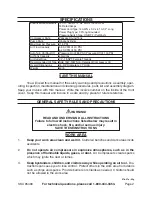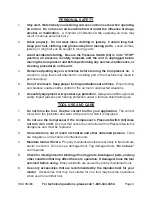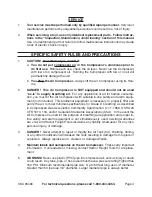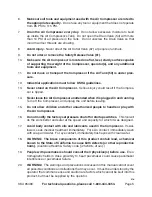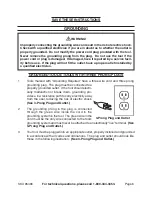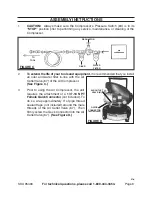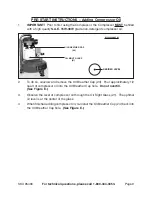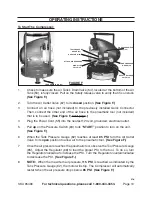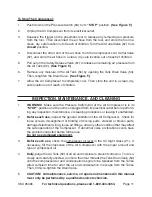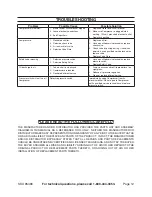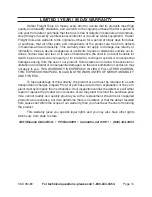
Page 10
SKU 95499
for technical questions, please call 1-800-444-3353.
OPERAtING INStRuCtIONS
to Start the Compressor:
tOOL PRESSuRE
GAuGE (65)
SAfEty RELEASE
VALVE (61)
REGuLAtOR (66)
AttACH AIR HOSE HERE
tANK dRAIN VALVE (54)
tANK PRESSuRE
GAuGE (62)
PRESSuRE SWItCH
(63)
AIR OutLEt
VALVE (67)
fIGuRE f
1.
Check to make sure the Air Tank’s Drain Valve (54), located at the bottom of the Air
Tank (50), is fully closed. Pull on the Safety release valve to verify that it is unstuck.
(See figure f.)
Turn the Air Outlet Valve (67) to its
2.
closed position. (See figure f.)
Connect an air hose (not included) to the previously installed Quick Connector.
3.
Then, connect the other end of the air hose to the pneumatic tool (not included)
that is to be used.
(See figure f, next page.)
Plug the Power Cord (55) into the nearest 120 volt, grounded, electrical outlet.
4.
Pull
5.
up on the Pressure Switch (63) to its “StARt” position to turn on the unit.
(See figure f.)
When the Tank Pressure Gauge (62) reaches at least
6.
85 PSI, turn the Air Outlet
Valve to its
open position to allow air to the pneumatic tool. (See figure f.)
Once the air pressure reaches the pneumatic tool, observe the Tool Pressure Gauge
7.
(65). Adjust the Regulator (66) to feed the proper PSI to the tool. To do so, turn
the Regulator clockwise to increase the PSI. Turn the Regulator counterclockwise
to decrease the PSI.
(See figure f.)
NOtE:
8.
When the maximum air pressure,
115 PSI, is reached as indicated by the
Tank Pressure Gauge (62), the motor will stop. The Compressor will automatically
restart when the air pressure drops below
85 PSI. (See figure f.)
07d


